Please login or click here to join.
Forgot Password? Click Here to reset pasword
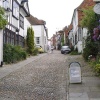 | 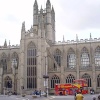 | 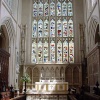 |  | 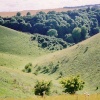 | 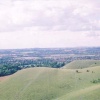 |
| Jo Adams Posts: 231 Joined: 23rd Sep 2006 Location: UK | quotePosted at 15:36 on 19th June 2008 I live in Bridgwater in Somerset - was born here and have never left. Admiral Robert Blake was born in 1599 in Bridgwater, the eldest of thirteen children born to a merchant in a little town house which is now the Admiral Blake museum. He attended the local Grammar School and became one of the most important military commanders of the British Commonwealth. He was one of the most famous English admirals of the 17th Century. He died in 1657 off the coast of Portsmouth. During the English Civil War (1642-51) he fought in Cromwell’s army, reaching the rank of Colonel. The war over, Cromwell turned his attention to maritime threats and appointed Blake to the post of “General-at-Sea”. The immediate danger was a Royalist fleet under the command of Prince Rupert. Blake hunted them down and destroyed them in battle at Cartagena in November 1650. He then set about consolidating Cromwell’s hold on Britain’s more far flung territories such as the Isles of Scilly and the Channel Islands. During that time he pioneered techniques for naval blockades and amphibious landings. In 1645 Bridgwater was occupied by the Kings army, then liberated by Oliver Cromwell’s Parliamentarian Army in a swift but bloody siege. The castle, built by the Normans in 1202, was destroyed and never again rebuilt. Cromwell turned England into a Republic. In 1652 war broke out between Britain and Holland and Blake led the British fleets to victory. He was then given a commission to make a nuisance of himself in and around the Mediterranean. This included a successful attack on Tunis. Later he destroyed Spain’s New World Fleet at a battle off Tenerife in April 1657, without losing a single ship himself. That was his finest victory, and his last battle. Suffering from many wounds, Blake died in 1657 before the fleet could reach home. He was given a state funeral and buried in Westminster Abbey. When Charles II became King he ordered that all Cromwell’s henchmen who were buried in the Abbey be disinterred and buried elsewhere. With the restoration of the Monarchy, the period of Cromwell’s rule became an unfashionable part of British history. The Monmouth Rebellion in 1685 is the most notable thing to have happened here. In July 1685 the Battle of Sedgemoor, the last battle ever fought on English soil, took place three miles outside of the town at Westonzoyland. After the battle the revolutionaries suffered public execution and transportation as white slaves to the colonies. The crossroads in Somerset were littered with the mutilated bodies of the rebels from the surrounding area, rebels who had been armed only with the “tools of their trade” - pitchforks and axes etc - who had supported James, Duke of Monmouth, the illegitimate son of Charles II. The Monmouth Rebellion was later to be called the Pitchfork Rebellion. |
L Posts: 5656 Joined: 10th Jun 2004 Location: UK | quotePosted at 16:09 on 19th June 2008 Did you type all that or cut and paste Jo? LOL Thats very interesting well done! |
| Roses Posts: 470 Joined: 9th Mar 2008 Location: USA | quotePosted at 02:16 on 20th June 2008 I grew up in Massachusetts, but have lived in many states over the years. I was also blessed with the oportunity to have lived for more than 14 years in the UK. In or near to Cambridge, they have so many wonderful colleges/universities! St Johns being a favorite with the tourists and it's Bridge of Sigh's. Also the round church for which i believe there are only 4 in all of britain. Ely has Cromwells house Buckden has Buckden Towers....Katherine of Aragon was sent here after her annulment to Henry VIII. St Ives has a wonderful chapel built into the center of the bridge. i believe there are only 4 left in the country, with 2 i believe in yorkshire. The area i grew up in was famous of course for the Boston Tea Party! also, Salem where the witch trial were held. we also have the Mohawk trail which is gorgeous in the fall. The area we are now in has NOTHING to compare to the above though....
|
| MariaGrazia Posts: 711 Joined: 25th Mar 2008 Location: Italy | quotePosted at 11:13 on 20th June 2008 This is the most representative square in Milan, where I was born and grown up, and where I still go to work to add to my monthly share of pollution. Over the last 15 years though, we've experienced ourselves all the scenarios already explained in the 'Question for non-Brits' thread , and that, due to Italy's geographical position and to the laxity of its politicians, has happened at such a speed that you would never believe. We then left the big city for a close and smaller town, Saronno. It was a short lasted illusion, but at least it's quiter here and closer to the Lakes' area. |
| Peter Evans Posts: 3863 Joined: 20th Aug 2006 Location: UK | quotePosted at 11:25 on 20th June 2008 Duomo Square looks ike a nice place Maria. Nice photo too. |
| Jo Adams Posts: 231 Joined: 23rd Sep 2006 Location: UK | quotePosted at 15:11 on 20th June 2008 On 19th June 2008 16:09, Lyn Greenaway wrote:
Typed it Lyn. All the info on the web is copyright so couldn't block and paste unfortunately. |
| MariaGrazia Posts: 711 Joined: 25th Mar 2008 Location: Italy | quotePosted at 22:11 on 20th June 2008 Thanks Peter. Wish I could say the picture was mine but it isn't  |
L Posts: 5656 Joined: 10th Jun 2004 Location: UK | quotePosted at 07:55 on 21st June 2008 Well done Jo! Nice photo Maria, I love Italy but i've never been to Milan....yet!
|
| Ray Stear Posts: 1930 Joined: 25th Apr 2008 Location: UK | quotePosted at 17:27 on 21st June 2008 Hi Mari I love the picture. Who is the statue of the man on horseback? Ciao Ray |
| Andy Edwards Posts: 1900 Joined: 14th Mar 2008 Location: UK | quotePosted at 19:57 on 21st June 2008 It's a beautiful square for sure. I'm intrigued by the statue too. |